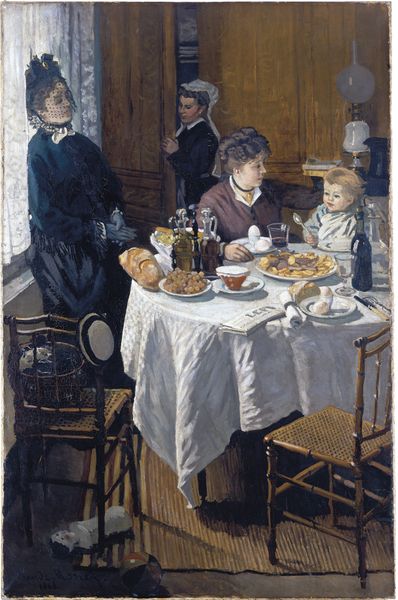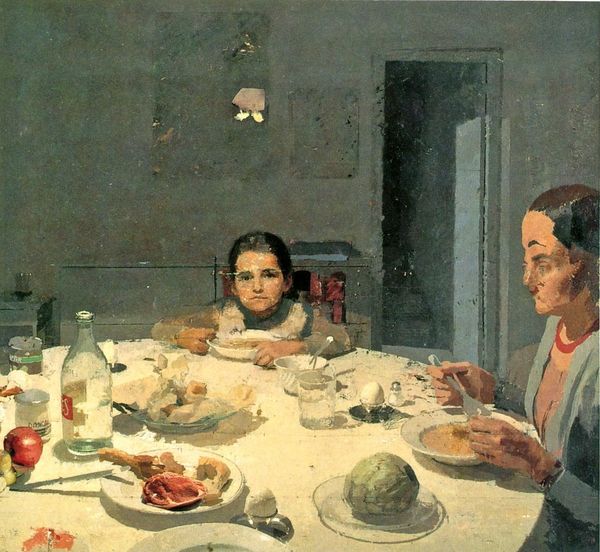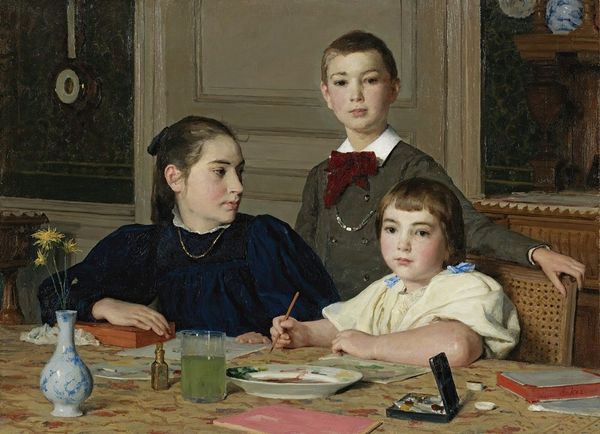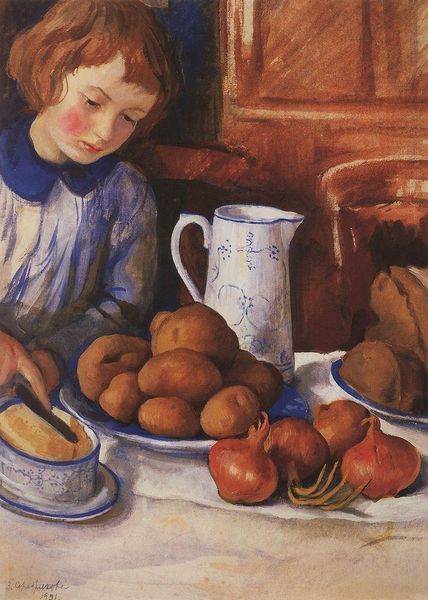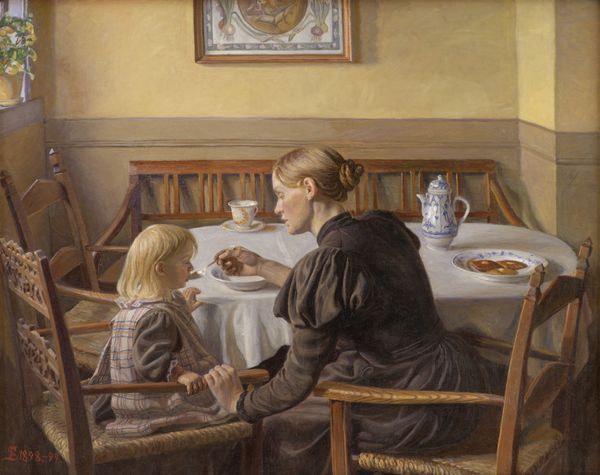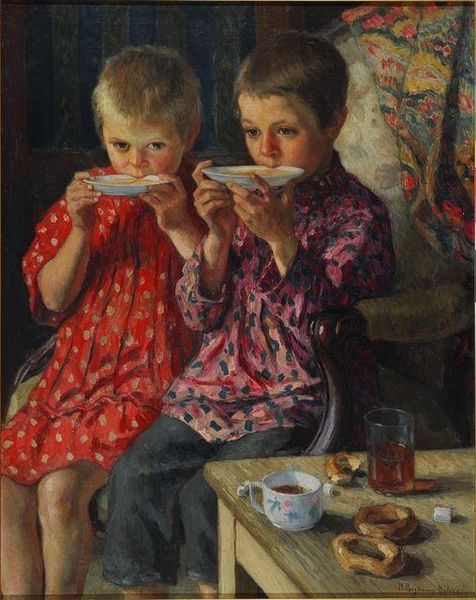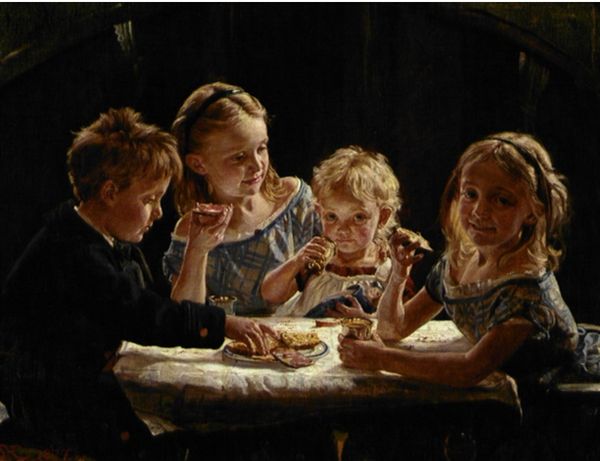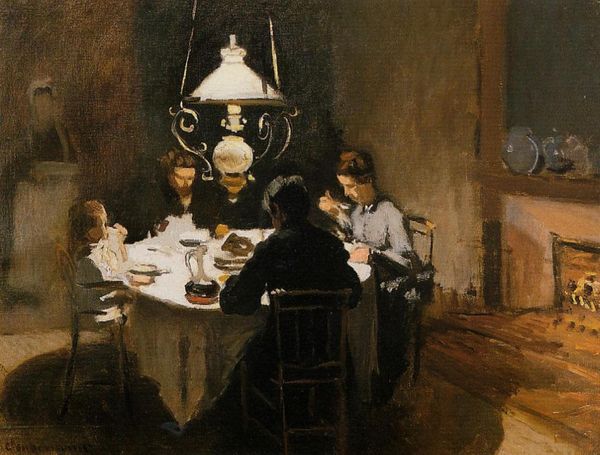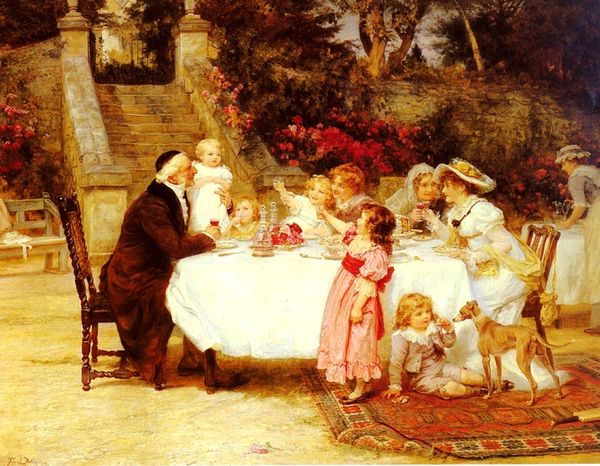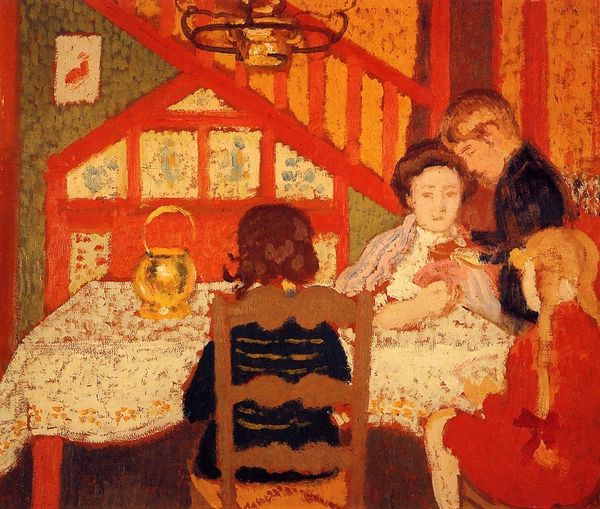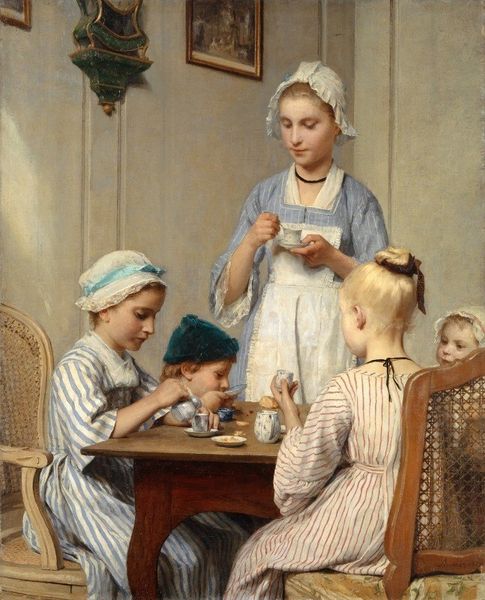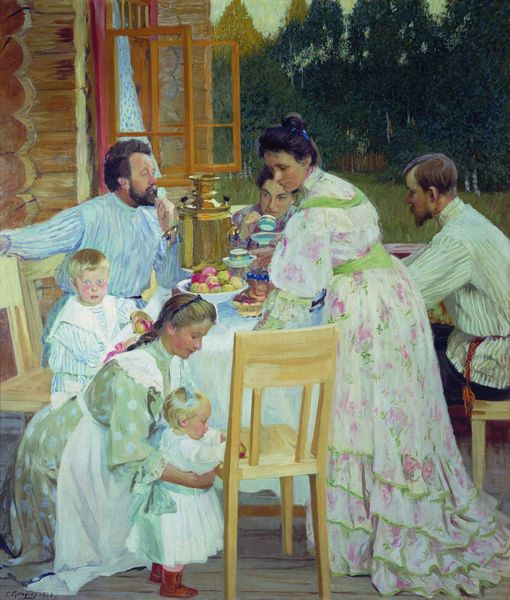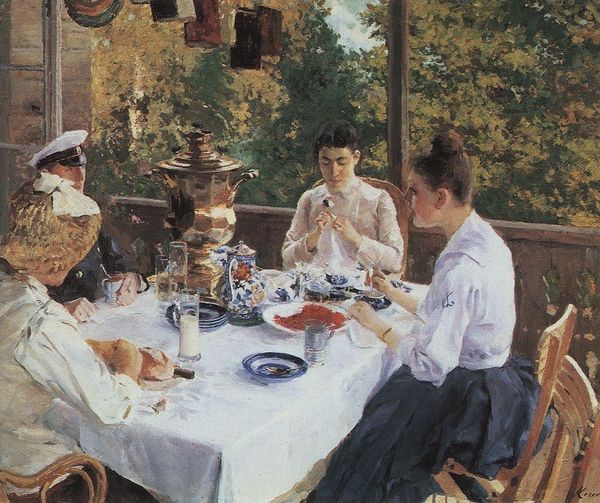
painting, oil-paint
#
portrait
#
painting
#
oil-paint
#
intimism
#
group-portraits
#
russian-avant-garde
#
genre-painting
Copyright: Public domain US
Curator: Welcome. We’re standing before Zinaida Serebriakova’s 1914 painting, "At Breakfast," currently residing in the Tretyakov Gallery in Moscow. Editor: My first impression is a sense of quiet observation, a mundane domestic scene rendered with surprisingly intense, almost melancholy, light. The children seem both present and distant. Curator: Serebriakova uses a muted palette—primarily blues, browns, and whites—to construct a tableau of balanced asymmetry. Notice how the central bowl and the light illuminating it creates a focal point, framed by the children on either side. The painterly brushstrokes lend a gentle texture to the overall composition. Editor: Right, the composition is certainly ordered but look beyond the arrangement of objects: These children lived through World War I, the Russian Revolution. Observing them through that historical lens, the intimacy of this breakfast is shadowed by an awareness of social and political disruption to the familial, even intimate sphere of domestic life. Curator: One might also consider how Serebriakova, as a woman artist working within the Russian Avant-Garde, positions herself in relation to artistic movements such as Intimism, here foregrounding her technical capabilities: color, form, line and texture—all coalesce into a cohesive visual experience, a domestic snapshot made timeless through its formal sophistication. Editor: And yet, the “snapshot” impression itself is a deliberate construction. Serebriakova was creating images of idealized, white, bourgeois childhood during an epoch of vast social unrest. "At Breakfast," offers an insight into an individual's subjective view of what Russian identity looked like. Which raises questions: whose identities were omitted? Who wasn't given the space to represent themselves, during this transformational moment? Curator: You raise essential points about power dynamics and representation. To return to the formal elements though, consider the way Serebriakova manipulates light—how it falls softly across the tablecloth, highlighting the textures of the crockery and glinting in the children’s eyes, an accomplished orchestration. Editor: Light can signify so much; here, I feel the bright exposure emphasizes an interior world under intense scrutiny. The way each child gazes, the little girl perhaps defiant, suggests a collective resistance against the changing backdrop. This intimate painting then turns into a broader social commentary reflecting the complexities of Russian identity and societal change at the time. Curator: Yes. So much to appreciate in this image! A masterclass, no matter your reading, in compositional strategy. Editor: A charged depiction of an era's discontents simmering beneath everyday acts of nourishment.
Comments
No comments
Be the first to comment and join the conversation on the ultimate creative platform.
